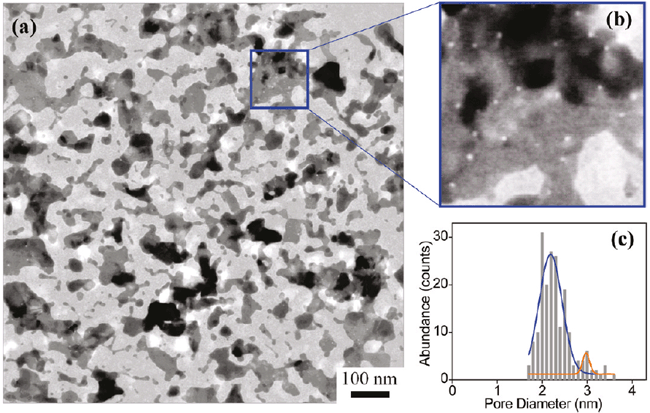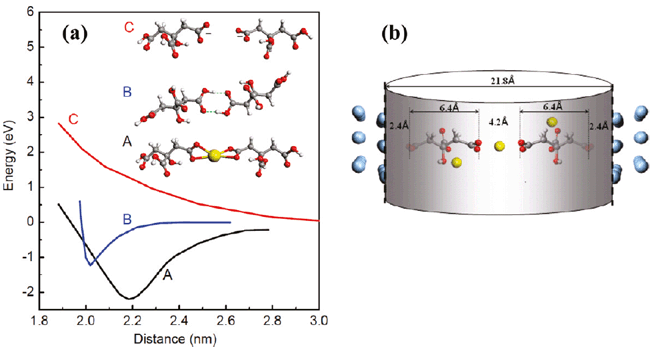It is challenging to make nanostructures using optical methods, mainly due to the well-known light diffraction limitation. Ultrafast laser pulses provide one promising way, making it fascinating that “ultrafast meets ultrasmall”. However, down to the scale of a few nanometers, non-trivial structures other than near-spherical particles have rarely been reported.
Recently, Associate Professor Jimin Zhao in the State Key Lab. for Surface Physics, Institute of Physics, Chinese Academy of Sciences and Beijing National Laboratory for Condensed Matter Physics improved the method of laser ablation in liquid to fabricate ultrasmall nanopores. He and Prof. Sheng Meng investigated the nanopore formation mechanism based on experimental results and first principles DFT calculations. With collaboration with Prof. H. X. Yang and Prof. Hongxing Xu, they finally achieved 2.2nm diameter nanopores on 3nm-thick silver films. Furthermore, by using smaller capping agent molecules, they fabricated smaller nanopores with 1.6nm diameter, which shows certain control ability. So far no other top-down methods can make such small metallic nanostructures.
The approach greatly advanced the capability of optical methods in making nanoscale structures, and has potential applications in areas such as near-field aperture probes, imaging masks, magnetic plasmonic resonances, and bio-sensing with individual nanopores. The results have been published in [Nano Letters 11, 3251-3257 (2011)].
This work was supported by the NSFC, MOST.
 |
| Fig. 1 Morphology and diameter histogram of the nanopores. (image by Jimin Zhao et al.) |
 |
| Fig. 2 Progressive growing mechanism. In the right panel, A→B→C→C→D→E displays a sequence of the growing stages. (image by Jimin Zhao et al.) |
 |
| Fig. 3 Physics mechanism at the molecular level. The right panel shows how molecules determine the pore size. (image by Sheng Meng et al.) |




